Comprehensive Guide on Motion Sickness in VR: Causes and Preventions
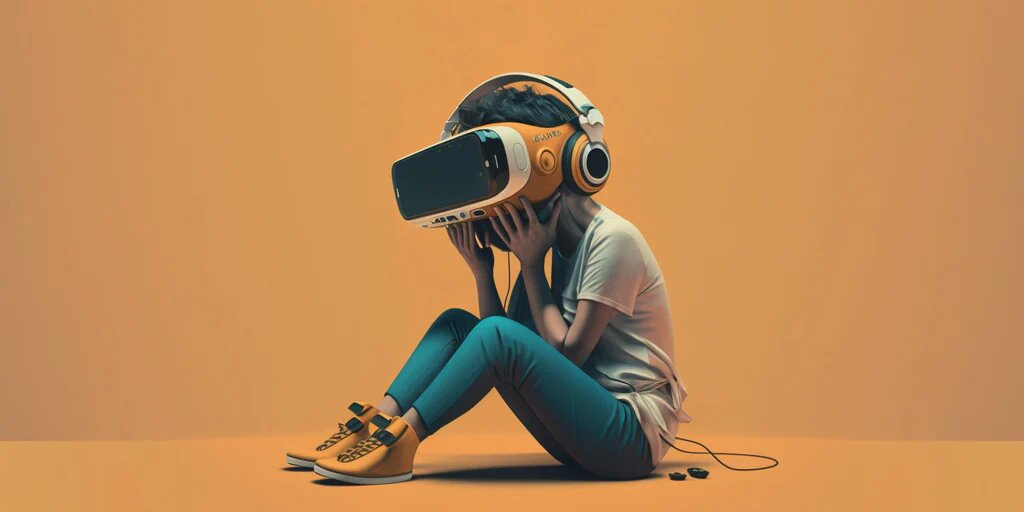
Why do people get Motion sickness in VR, and what can you do to avoid it?
Motion sickness in virtual reality (VR) is a common concern for many individuals considering or already owning a VR headset. Referred to as cybersickness, it shares similarities with motion sickness, causing symptoms like nausea, headaches, dizziness, and a general lack of balance. However, experiencing VR Motion sickness doesn't mean you will forever be affected by it.
By understanding its causes and taking appropriate measures, you can minimize and even overcome this issue, allowing you to enjoy your favorite VR educational games and simulations. In this article, we will delve into the reasons behind VR-induced Motion sickness and offer practical advice to combat and prevent these discomforting sensations.
But first, let’s understand more about Motion Sickness in VR. Understanding Motion Sickness in VR
VR triggers Motion sickness because it creates a disconnect between what your brain perceives and what your body experiences. When your brain thinks you are moving, but your body is static, this confusion leads to feelings of nausea and discomfort. Some VR games involve walking in place or standing still to minimize this issue, while others rely on immersion and involve walking or moving using controls.
However, the conflicting signals between your senses can still result in sweating, dizziness, headaches, and even nausea.
Also Read, The Future of Healthcare: Transforming the Patient Experience with Immersive Technologies
Factors Influencing Motion Sickness in VR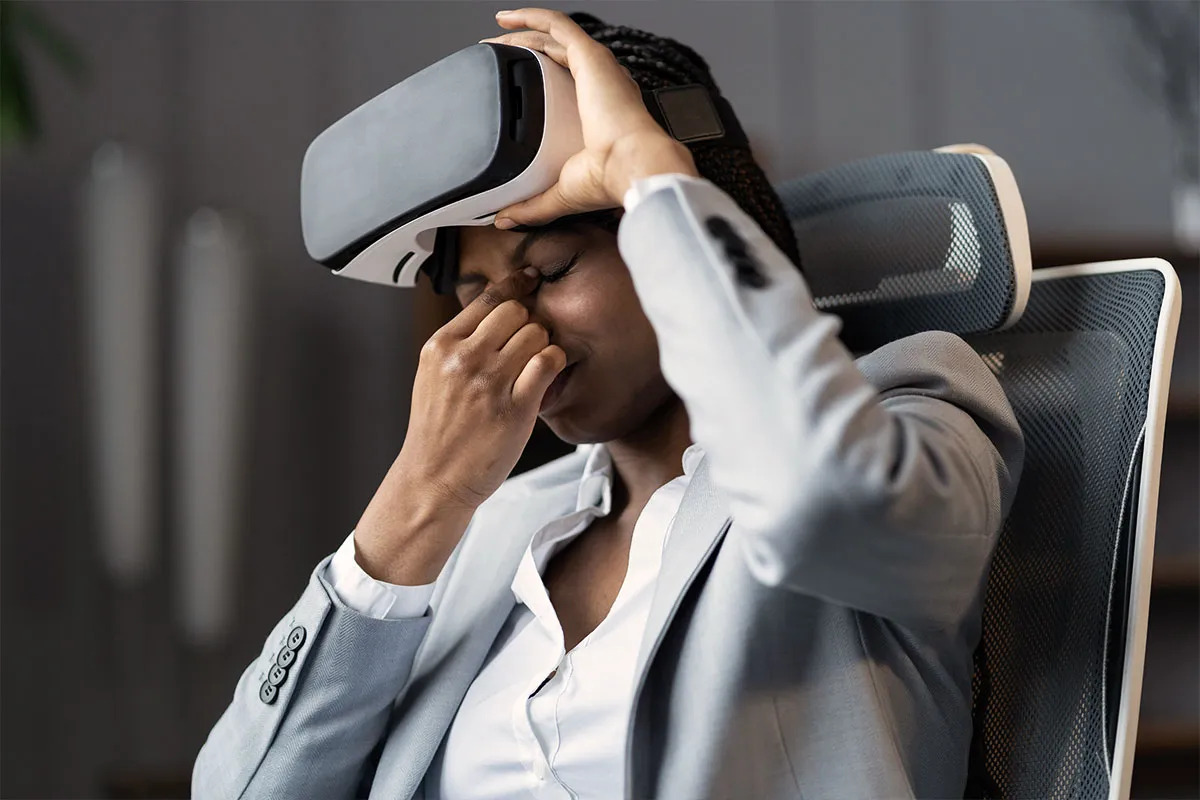
Type of Headset: The type of VR headset and tracking technology used to play a significant role in determining the likelihood of experiencing Motion sickness. Headsets with 6 degrees of freedom tracking (6DoF) allow greater freedom of movement within the virtual environment, reducing disorientation and conflicting signals to the brain.
Latency: Latency, or the delay between movement and its registration in the VR app, is a major contributor to Motion sickness. High latency can cause a mismatch between your body's movements and what you see or hear in VR, leading to discomfort.
Eye Movement: Unfamiliar eye Motion required to stabilize the virtual scene on the retina can contribute to Motion sickness in VR. When the virtual environment moves differently from what the eyes expect, it creates a conflict between what the brain anticipates and what it perceives, leading to discomfort.
Postural Instability: When the virtual scene moves in a way that mimics real-world motion, such as on a virtual rollercoaster, postural instability can occur.
Fortunately, there are ways to alleviate and prevent Motion sickness in VR. Here are some effective strategies:
Gradually Adapt to VR to Reduce Motion Sickness
Prolonged exposure to virtual reality (VR) can heighten the chances of experiencing Motion sickness. To mitigate this discomfort, it is important to give your body time to rest and readjust during VR sessions. Begin with shorter sessions and incrementally increase the duration, allowing your body to adapt to the virtual environment.
Similar to other forms of Motion sickness, your body gradually adapts over time. For instance, spending a few days on a boat often leads to adaptation by the time you disembark. The same principle applies to Motion sickness in VR. As you expose your body to VR experiences, it becomes more familiar with the sensory input, leading to adaptation and a decrease in Motion sickness symptoms.
Try incorporating a gradual increase in VR usage into your routine. For example, start with five-minute sessions every few days for a week, then progress to ten-minute sessions twice a week the following week. Gradually build up your tolerance, aiming for a sustained 15-minute session for a few weeks.
By following this approach, your body should acclimate to VR, reducing the likelihood of experiencing Motion sickness.
Also read, Best VR Educational Games | Amplifying Education with Fun
Opt for High-Quality VR Systems and Address Latency or Glitches
Investing in a high-quality VR system is essential for a smoother and more immersive experience, which can significantly reduce the likelihood of Motion sickness. When choosing a VR headset, look for advanced tracking technology, low latency, and high refresh rates to minimize sensory discrepancies.
If you encounter significant latency or glitches while using VR, take immediate action. First, try restarting your headset and the VR application to see if it resolves the issue. However, if the problem persists, it's crucial to stop using the headset altogether.
Even experienced VR users are more susceptible toMotion sickness when movements are choppy, erratic, or glitching due to the disorienting effect it has on the body. Prioritize your well-being and ensure a smooth VR experience by addressing latency and glitches promptly. Maximize Comfort and Stability
To ensure a pleasant and comfortable virtual reality (VR) experience, it's important to make mindful selections when it comes to games and experiences.
Some VR games and experiences involve intense movements and rapid perspective changes, which can potentially worsen symptoms of Motion sickness. If you're new to VR or prone to Motion sickness, it is advisable, to begin with slower-paced and stationary VR experiences. Gradually, as you acclimate to the technology, you can venture into more dynamic content.
Or, how about sitting down while using VR?
When engaging in VR, adopting a seated position can significantly minimize the risk of disorientation caused by the interplay between your real-life movements and the virtual environment. By sitting down, you naturally limit your body's range of Motion, enhancing postural stability.
This becomes especially important if you're a novice VR user, as it helps create a more stable and immersive experience overall.
Ensure a Comfortable Environment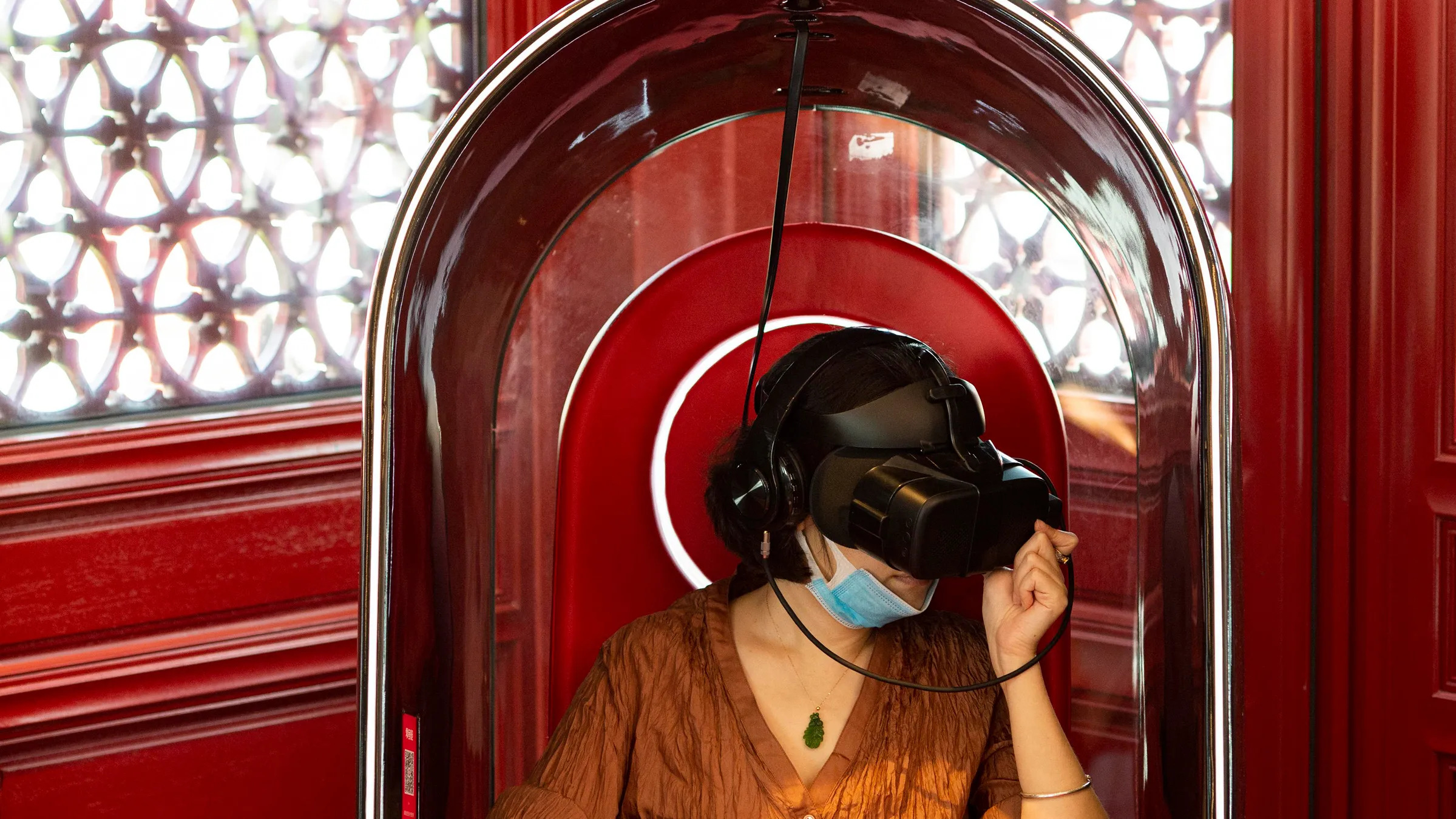 Creating a comfortable environment while using virtual reality (VR) is crucial for minimizing Motion sickness and enhancing the overall experience.
Creating a comfortable environment while using virtual reality (VR) is crucial for minimizing Motion sickness and enhancing the overall experience.
To achieve this ensure proper lighting and minimize distractions in your VR space. Adequate lighting that doesn't cause glare on the headset and a distraction-free environment can help you maintain focus and reduce sensory overload.
Along with this, you need to pay attention to the temperature and ventilation of the room. A cool and well-ventilated space is important to prevent sweating, which can intensify Motion sickness symptoms. By maintaining a comfortable temperature and ensuring proper air circulation, you can reduce the chances of feeling uncomfortable or nauseous during VR sessions.
Well, adjusting the brightness of your VR headset can be beneficial. Lowering the brightness level can decrease the amount of visual stimulation, potentially easing the adjustment of your equilibrium to the virtual environment. This adjustment may help alleviate sensory overload and contribute to a more comfortable VR experience.
Also Read, Metaverse Applications In The Real World | Embracing its Applications & Overcoming Challenges
Optimize VR Settings
Calibrating your VR settings is essential for maximizing your enjoyment and minimizing the likelihood of Motion sickness. By following a few adjustments, you can improve the fit of your headset, align the interpupillary distance (IPD) with your eyes, and fine-tune brightness and display settings to achieve a comfortable visual balance.
The fit of your headset is crucial to ensure a clear and immersive experience. Ill-fitting headsets can lead to unfocused lenses, which can disorient you and strain your brain as it struggles to interpret the visuals. To avoid additional cognitive load on top of adjusting to the virtual environment, make sure your headset is securely positioned on your head.
Take the time to adjust the lenses for a crisp and clear image before diving into any VR experience.
If you wear glasses, it's important to account for them in your VR setup. Many VR headsets come with a spacer that allows you to wear your glasses comfortably inside the headset. By utilizing this spacer, you can enjoy VR without compromising your visual clarity or comfort.
Take it slowly and Control your Breathing
Deep and controlled breathing can help manage Motion sickness symptoms by relaxing your body and reducing anxiety.
When using VR, focus on slow and deliberate breaths. This technique not only helps you relax but also prevents breath-holding, which can contribute to Motion sickness. By maintaining a steady breathing pattern, you can create a sense of calmness and stability while engaging with VR content.
To further minimize the risk of Motion sickness, it is advisable to start with games or simulations that involve minimal movement. Opt for experiences with 3DOF (three degrees of freedom), where the virtual scene around you remains relatively static.
Additionally, choose activities where you have control over the speed or environment. This familiarity helps your body anticipate and adjust to virtual motion, reducing the likelihood of experiencing Motion sickness.
If you feel nervous or anxious about the potential for nausea in VR, it's important to remember not to hold your breath subconsciously. Often, people tend to hold their breath in anticipation of discomfort. Instead, consciously remind yourself to breathe normally throughout the VR experience.
By maintaining a regular breathing rhythm, you can help alleviate anxiety and support a more comfortable virtual reality encounter.
Also Read, Best VR Educational Games | Amplifying Education with Fun
Minimize Head Movements
Rapid or excessive head movements in VR can intensify Motion sickness. Try to keep your head movements smooth and controlled, particularly during fast-paced experiences. Gradually adapting to VR's unique head movements can improve comfort and reduce sensory conflicts.
Don't use VR if you have an Ear Infection
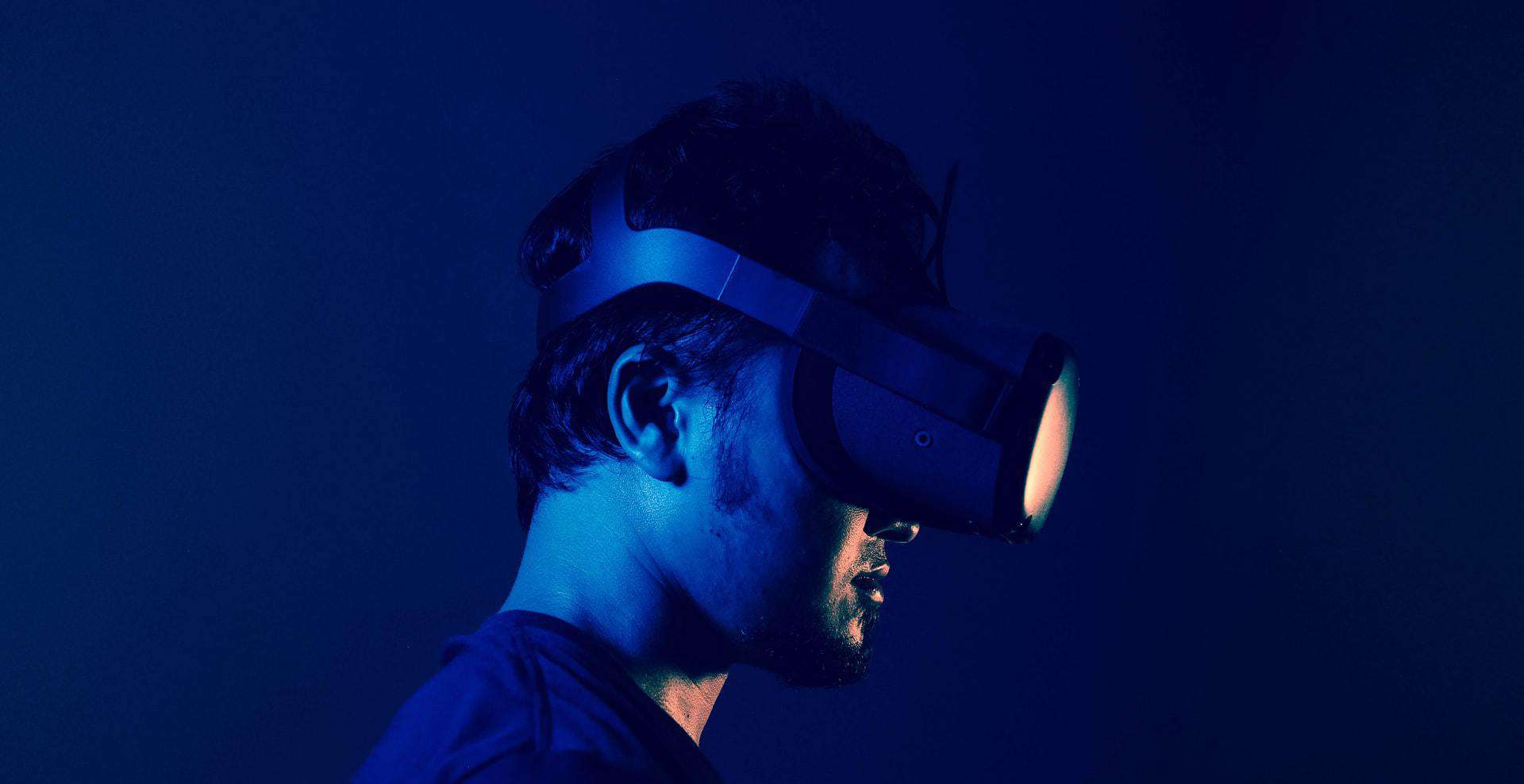
The body's sense of balance and equilibrium is controlled in part by our ears. Therefore, if you have an internal problem with your ears such as an infection then your balance may already be affected, and this will likely be heightened in VR as your body has to work harder to be orientated.
Conclusion
In conclusion, Motion sickness in virtual reality (VR) can occur due to the sensory disconnect between what your brain perceives and what your body experiences. This discrepancy can lead to symptoms such as nausea, dizziness, and headaches. However, by understanding the causes and taking appropriate measures, you can minimize and even overcome VR-induced Motion sickness.
But, you need to remember that everyone's tolerance to VR Motion sickness may vary, and it may take time for your body to adapt. Be patient, listen to your body, and take breaks when needed. With time and practice, individuals can overcome or significantly reduce Motion sickness in VR, allowing them to fully enjoy the immersive world of virtual reality. For more blogs on Virtual Reality, visit www.ixrlabs.com
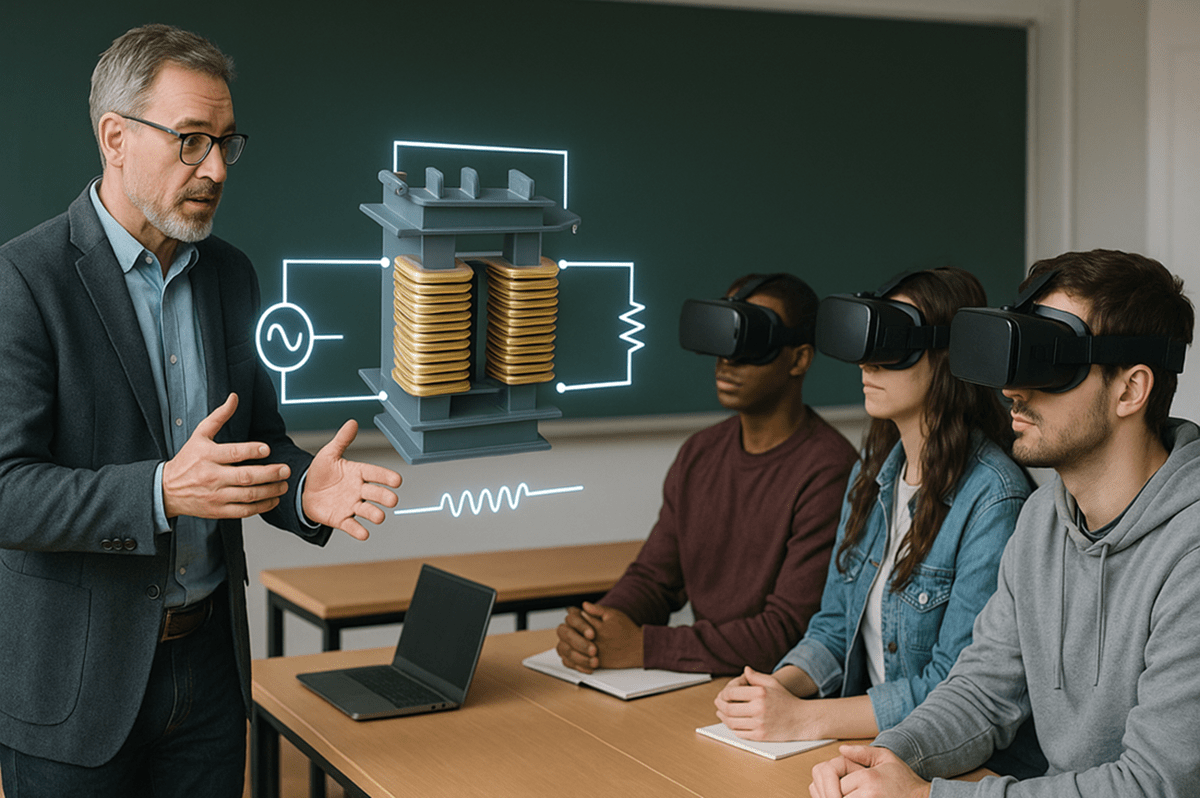

.png)
.png)

.png)